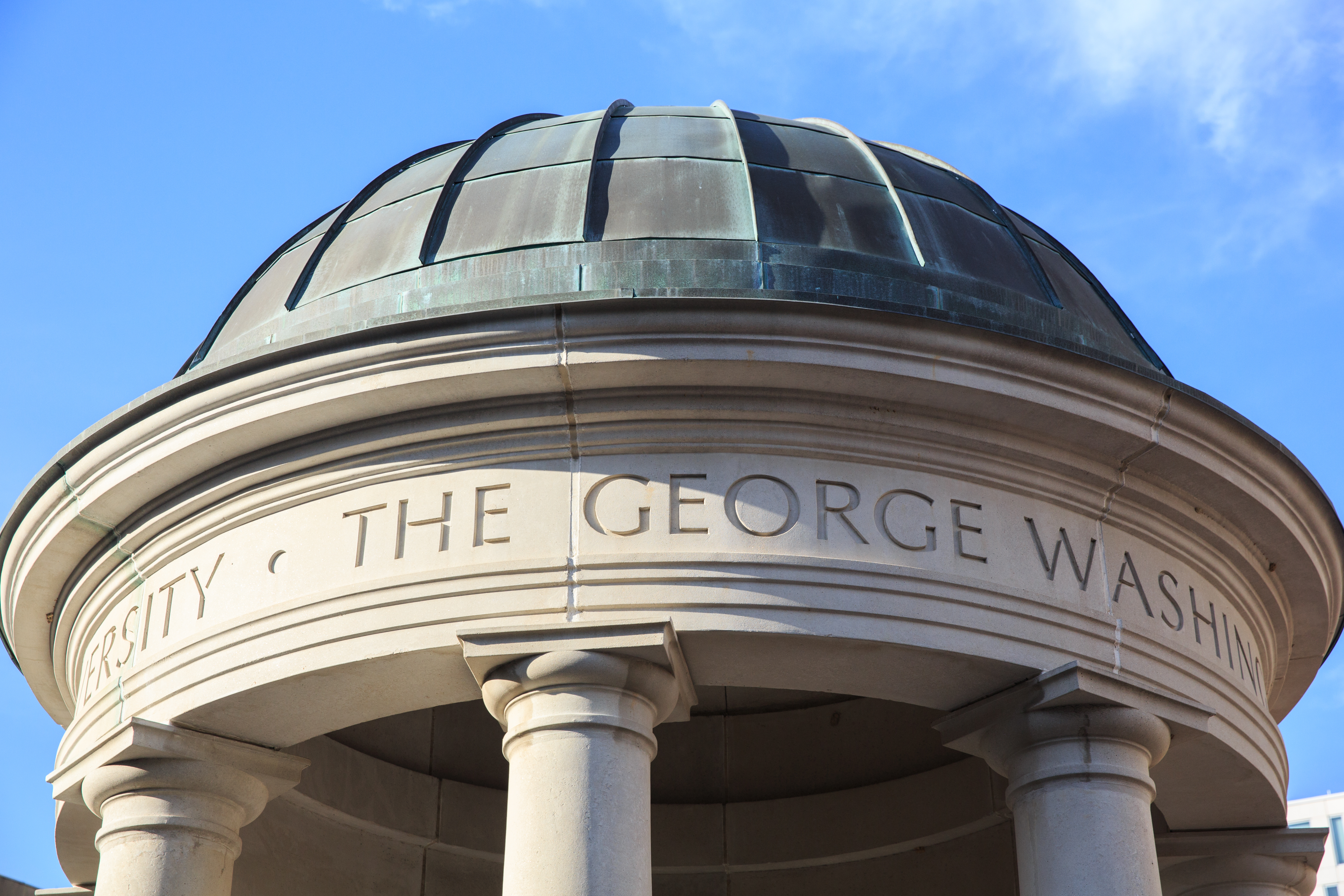By B.L. Wilson
Learning about the segregationist policies of George Washington University’s longest-serving president, Cloyd Heck Marvin, was a “little unsettling” for Kaitlin Buff, who just spent a semester researching slavery and its legacy at the university.
Her focus, along with classmates Gabriela Arroyo and Julian Jervis, was the segregation and desegregation of the GW Lisner Auditorium, which was opened to the public in 1946 but remained closed to blacks. Picketers organized by the GW American Veterans Committee and Actor’s Equity marched outside Lisner, protesting GW’s refusal to allow “Negroes” admission to the theater. According to Mr. Jervis, actor Ingrid Bergman was particularly outspoken, saying she would not have come to perform at Lisner had she known about the restrictions. It was to no avail.
“I was pretty ignorant about who Marvin was before I took this class,” she said. “I don’t know exactly how we could change [the name of the Marvin Center.] It would be cool if we could figure out a way.”
Ms. Buff participated in the GW Confronts Race and Discrimination Student Research Symposium at the National Churchill Library and Center Friday that was sponsored by the Office of the Provost. The symposium was an outgrowth of an initiative undertaken by the GW Working Group on Slavery and Its Legacies.
“Part of being students and faculty and staff at GW means understanding our history,” said Deputy Provost Teresa Murphy. “It means understanding the challenges we’ve had, the triumphs and facing those challenges. It means understanding the work we still need to do.”
Nine students from three courses—Professor Richard Stott’s “History of GW,” Assistant Professor Phillip Troutman’s “University Writing,” and Associate Professor Thomas Guglielmo’s “Race and Racism in U.S. History,” pored over GW archives, GW Hatchet articles and interviews with alumni to uncover GW’s march toward integration.
Senior Muhammad Al-Amin noted that GW was the last college in the District of Columbia to desegregate, officially opening its doors to blacks in 1954. Senior Hope Grossman, who was on the panel “The Long Desegregation” with Mr. Al-Amin, found that change came slowly.
“There’s no evidence [President Marvin’s] policies changed,” Ms. Grossman said in response to questions from students who attended the symposium. “Despite the public actions of the university welcoming African American students, his private language and actions were incredibly racist and restrictive.”
Mr. Al-Amin said his research found that GW students back then weighed in both for and against desegregation some arguing that since there were already universities in D.C. that admitted black students it was “not fair that there should exist universities where students that may prefer segregation may enroll unless the editors believe that people who believe in segregation are not entitled to secure a college education in the city of Washington.”
To understand what the first black students in the 1960s experienced, Mr. Al-Amin spoke with an alumna, Youtha Hardman-Cromwell, who is now a retired Methodist minister. She told him negative experiences were few but remembered a relationship with a young male “Caucasian” student that she often talked with who didn’t acknowledge her when they passed each other in a stairwell. She said it wasn’t until 30 years after she left GW that the pain she experienced in that moment came back to her.
“For 15 years, George Washington University made no effort to increase its enrollment of African American students,” Ms. Grossman said. In 1968, pushed by the GW Black Student Union and the momentum of the modern civil rights environment in the United States, the university created a program that ultimately established five, full-tuition grants for D.C. students.
The Black Student Union “amped up its” efforts, she said, and were joined by other student organizations until the university eventually hired staff to run the Educational Opportunity Program. By 1984, black student enrollment was up to 7 percent of the student population.
“I’m reading about all those issues that were happening. I didn’t know that it was still happening, Ms. Grossman said, reflecting on recent campus events. “It really opened my eyes to the work we need to do.”
Helena Doms presented on the 1964 Referendum on Restrictive Language on Sororities and Fraternities that required campus organizations to get rid of exclusionary clauses, which was opposed then by the Intrafraternity Council and PanHellenic Organizations and the GW administration.
“The president himself said sororities and fraternities have naturally exclusive clauses. There’s nothing we can do about it,” she said.
At the time, GW alumnus Vincent Gray, a former mayor of Washington, D.C., and a current D.C. Council member, was one of three black students to desegregate a predominantly white Greek fraternity. It wasn’t easy, senior Rosa Araiza explained. Going through rush, she said, “he would be completely ignored. Some people would shun him.”
By 1968, GW required all organizations to have a non-discrimination policy in their constitution and by-laws and beefed up the rules in 1970. Ms. Araiza said Greek life and organizations underwent a dramatic decline.
Ms. Araiza was part of a three-member panel, including students Ruby Cheresnowky and Abby Cozier, who explained that the discriminatory practices of Greek organizations and the need for a safe space on the GW campus for people of color gave rise to the formation of black Greek groups and multicultural Greek organizations.
“What’s really cool about multicultural Greek life is that these groups provide a space to be proud and celebrate your culture and to really celebrate that you are at GW to be completely honest,” said Ms. Cheresnowsky. “We have Deltas, Alphas. This is showing Greek unity striving together and promoting events.”
Closing the symposium, Jennifer James, associate professor of English and director of the Africana studies program, who spearheaded the Working Group on Slavery and Its Legacies said, “the initiative is dedicated to uncovering GW’s history” so that students “will have a sense of ownership of the university.”


